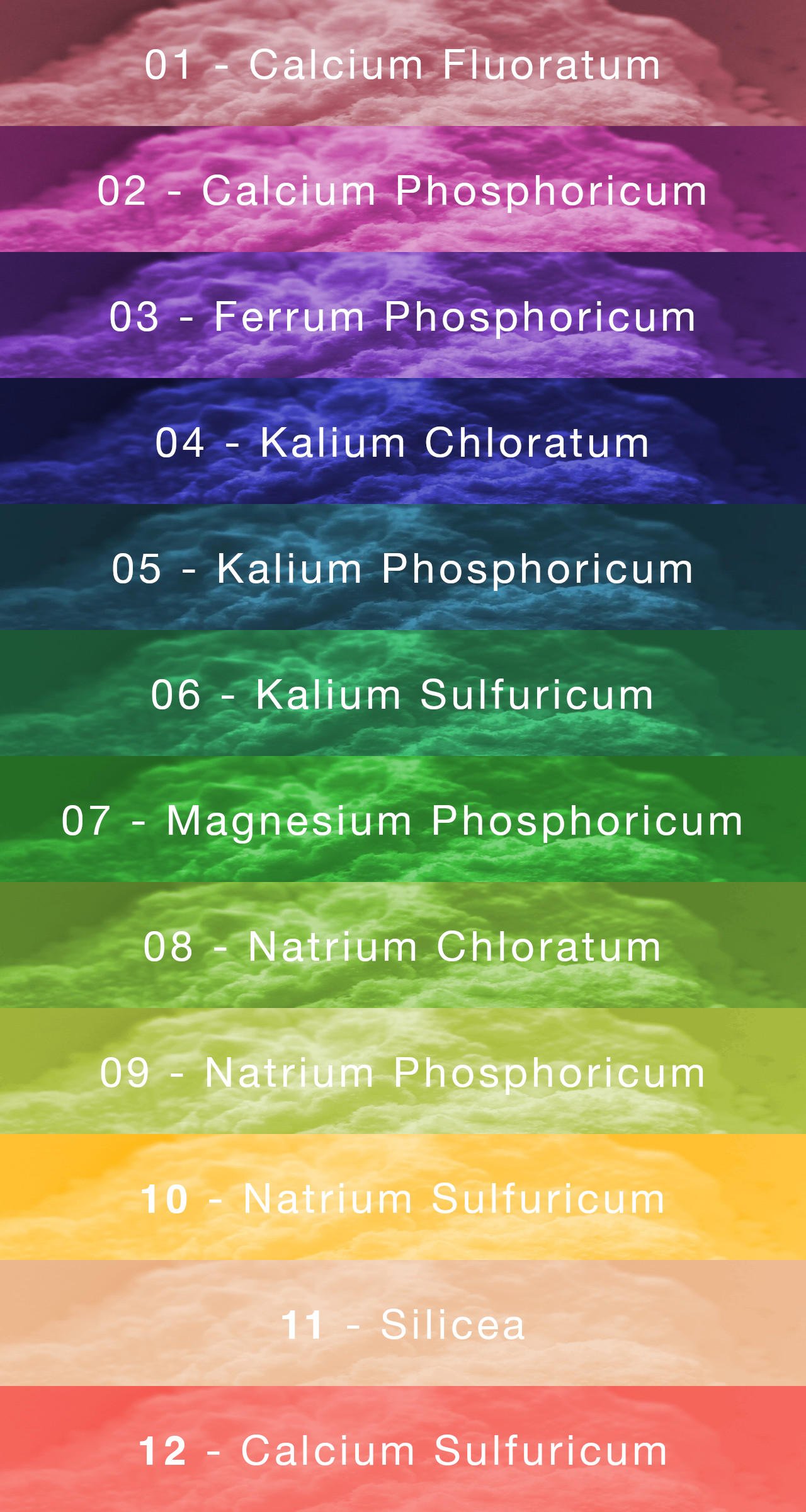The 12 Base Salts
Schuessler salts, also known as Schuessler cell salts or tissue salts, are a system of mineral remedies developed by Dr. Wilhelm Heinrich Schuessler, a German doctor, in the late 19th century.
Dr. Schuessler believed that certain mineral deficiencies within cells were the root cause of many diseases and health conditions. To address this, he identified 12 mineral compounds that are essential for cellular function and health.
These 12 mineral compounds, known as Schuessler salts, are prepared in a homeopathic manner, meaning they are highly diluted and potentised. They are believed to help restore mineral balance within cells and promote overall health and well-being.
Each Schuessler salt corresponds to a specific mineral and is used to treat various health issues associated with deficiencies or imbalances of that mineral. For example, calcium phosphate (Calcium Phosphoricum) is believed to support bone health and vitality, while potassium chloride (Kalium Muriaticum) is thought to aid in respiratory health and mucous membrane function.
Schuessler salts are available in various forms, including tablets, sprays, and ointments, and are commonly used as complementary or alternative remedies for a wide range of health conditions.
Additional Salts
The supplementary salts or additional salts, are an extension of the original 12 Schuessler salts developed by Dr. Wilhelm Heinrich Schuessler. While Dr. Schuessler initially identified 12 mineral compounds essential for cellular function, further research and clinical observations led to the recognition of additional minerals that could also be beneficial for health.
These supplementary salts, numbered 13 to 33, include a broader range of minerals beyond the original 12. Each salt corresponds to a specific mineral and is believed to address particular health concerns associated with deficiencies or imbalances of that mineral.
Like the original 12 Schuessler salts, the Supplementary Salts are also prepared in a homeopathic manner.
Biochemistry according to Dr. Schuessler
Dr. Wilhelm Heinrich Schüssler, a practicing physician from 1821 to 1898, sought a simple yet effective healing method accessible to all. His approach, equally applicable to animals, often yields remarkable results where skepticism among human users might hinder them. While human discomfort with medications persists, the application of Schüssler minerals to animals frequently surprises with its efficacy.
In tracing the origins of these minerals, we encounter two influential researchers whose work guided Dr. Schuessler’s understanding of human cell biology. Virchow, a prominent figure in Berlin, stated that disease fundamentally alters cellular function. Moleschott, a Dutch researcher based in Italy, expanded upon this, asserting that cellular disease results from a deficiency in inorganic salts, or minerals. Dr. Schuessler logically concluded that restoring these mineral imbalances is essential for cellular and bodily health.
However, the process was not without its complexities. Dr. Schuessler lacked knowledge of Prof. Vincent’s microbiological research, which revealed that cellular metabolism operates solely at the molecular level. Nevertheless, Dr. Schuessler recognised the potential risks of excessive mineral dosages, advocating for their dilution to ensure cellular absorption and prevent harm.


